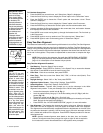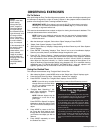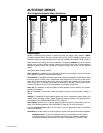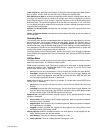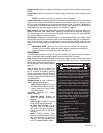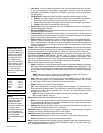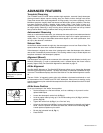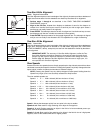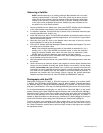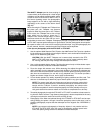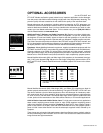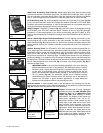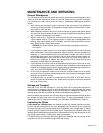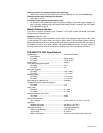
Two-Star Alt/Az Alignment
Level: Beginner/Intermediate
Two-Star Alignment requires some knowledge of the night sky. Autostar provides a database of
bright stars and two stars from this database are chosen by the observer for alignment.
1.
Perform steps 1 through 8 as described in the "EASY TWO-STAR ALIGNMENT
PROCEDURE," page 14.
2 . Align to the first star. Autostar then displays a database of stars for the observer to
choose from. Use the Scroll keys to scroll to a star that you wish to align upon. Select a
star that you can easily locate in the night sky.
3.
Press ENTER. The telescope slews to the star for alignment. Use the Arrow keys to move
the telescope until the star is visible and centered in the eyepiece.
4. Press ENTER. Repeat procedure for the second alignment star. The telescope is aligned
and you are now ready to use Autostar's GO TO capabilities for a night of observing.
One-Star Alt/Az Alignment
Level: Intermediate
One-Star Alignment requires some knowledge of the night sky. Autostar provides a database of
bright stars. One-Star Alignment is identical to Two-Star Alt/Az: Alignment (see “TWO-STAR
ALT/AZ ALIGNMENT,” above), except only one star from this database is chosen by the observ-
er for alignment.
IMPORTANT NOTE: The accuracy of One-Star Alt/Az Alignment, unlike the Two-
Star Alt/Az Alignment procedure, depends on how well the observer levels the tel-
escope and how close to North the telescope is pointed when setting the Home
Position (Fig. 12). Because Two-Star Alignment uses two stars to align upon, it is
more precise than One-Star Alignment.
Slew Speeds:
Autostar has nine slew speeds that are directly proportional to the sidereal rate and have been
calculated to accomplish specific functions. Pressing the Speed/? key briefly changes the slew
speed, which is shown for about two seconds on Autostar’s display.
NOTE: Pressing the Speed/? key very briefly changes the slew speed. Holding down the
Speed/? key longer (one to two seconds) accesses the Help function.
The nine available speeds are:
Speed 1 = 5° = 1200 x sidereal (300 arc-min/sec or 5°/sec)
Speed 2 = 2° = 480 x sidereal (120 arc-min/sec or 2°/sec)
Speed 3 = 1° = 240 x sidereal (60 arc-min/sec or 1°/sec)
Speed 4 = 0.5° = 120 x sidereal (30 arc-min/sec or 0.5°/sec)
Speed 5 = 64x = 64 x sidereal (16 arc-min/sec or 0.27°/sec)
Speed 6 = 32x = 32 x sidereal (8 arc-min/sec or 0.13°/sec)
Speed 7 = 16x = 16 x sidereal (4 arc-min/sec or 0.067°/sec)
Speed 8 = 8x = 8 x sidereal (2 arc-min/sec or 0.033°/sec)
Speed 9 = 2x = 2 x sidereal (0.5 arc-min/sec or 0.008°/sec)
Speed 1: Moves the telescope quickly from one point in the sky to another
Speeds 2 or 3: Best used for rough centering of an object in the eyepiece.
Speeds 4, 5, or 6: Enables centering an object in the field of a low-to-moderate power eye-
piece, such as the standard MA 25mm.
Speeds 7, 8, or 9: Best used for fine centering of an object in the field of view of a high power
eyepiece, such as the standard MA 9mm or higher powers.
22 Advanced Features
Fig. 15: Alt/Az One-Star
Alignment.
Fig. 14: Alt/Az Two-Star
Alignment.



